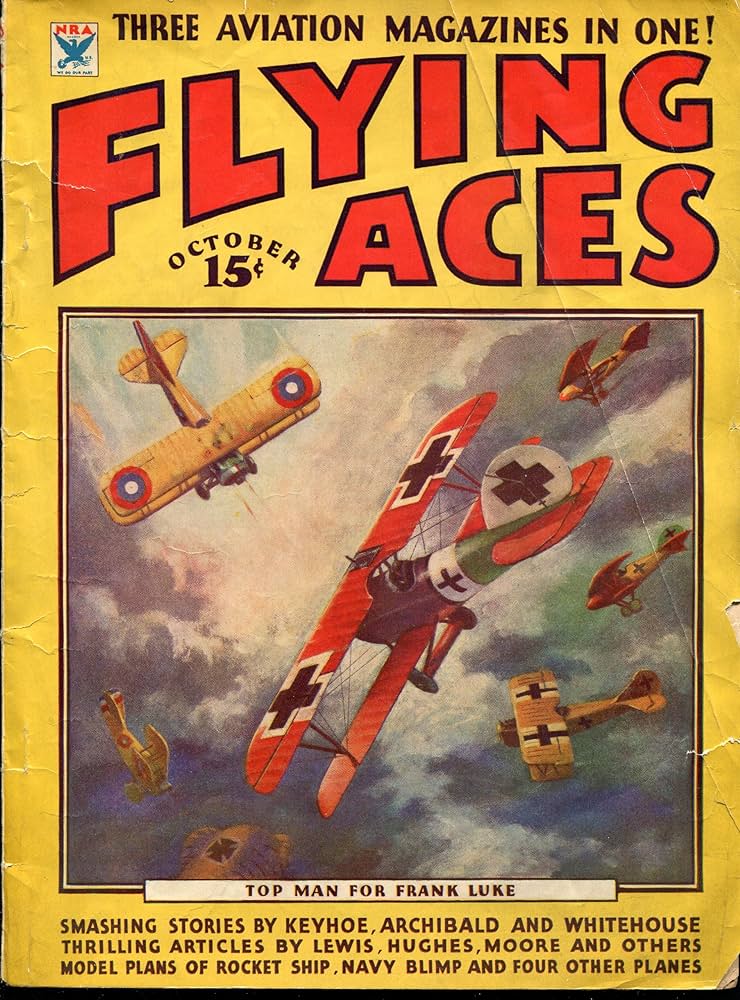Flying Aces (Prior revision dated Saturday 16 September 2023 03:20:06 -- @180)
Flying Aces was a preeminent literary medium largely focusing on aviation, fiction, and notably, the genre of the pulp magazine. Established in the United States in 1928, it offered a vibrant exploration of flight technology, combat stories, and adventure tales until its culmination in 1944.
This periodical was the brainchild of Periodical House, Inc., a New York-based publisher known for generating content that captivated audiences with gripping narratives and visual stimuli. The publication found a steadfast audience among adventure-seekers and aviation enthusiasts alike, promising tales of daring endeavors, historic engagements, and awe-inspiring chronicles.
Flying Aces was renowned for the high standard of it's content, covering a spectrum of subjects that included informative articles about aircraft, serialized novels, and action-adventure short stories. The magazine's depiction of air adventure was especially immersive, enabling readers to virtually experience the pulsating thrills of aerial combats and chivalry high above the trenches.
One of the most distinctive facets of Flying Aces was its portfolio of illustrators and writers. Authenticity was a crux in the publication, and to maintain this, it drew upon the expertise of renowned authors such as Donald Keyhoe, Arch Whitehouse, and O.B. Myers. Through the pens of these narrative craftsmen, the magazine's tales retained an air of veracity, transporting readers into the throbbing heart of skies aflame with dogfights and high-octane pursuits.
An equally integral part of the magazine's distinct identity was formed by its intricate cover designs. Fred Meagher, an esteemed illustrator and veteran of World War I, lent his master strokes, portraying aircrafts and war scenes with surgical precision and ineffable dynamism. These images became synonymous with the publication, weaving tales before the pages were even turned.
Over time, Flying Aces became a migratory stage for talents transitioning from the pulp magazine industry to mainstream book publication. Luminaries such as Robert Sidney Bowen and Raoul Whitfield propelled their careers forward using the Flying Aces platform, shaping the realm of aviation literature and inspiring an entire generation of aviation story enthusiasts.
Clean and compact in its delivery, Flying Aces redefined the spectrum of aviation literature. More than a magazine, it was a beacon for those drawn to the heady blend of history, technology, and human valor found in the world of aviation.{{Categories}}